Mental practice for treating upper extremity deficits in individuals with hemiparesis after stroke
- PMID: 32449959
- PMCID: PMC7387111
- DOI: 10.1002/14651858.CD005950.pub5
Mental practice for treating upper extremity deficits in individuals with hemiparesis after stroke
Abstract
Background: Stroke is caused by the interruption of blood flow to the brain (ischemic stroke) or the rupture of blood vessels within the brain (hemorrhagic stroke) and may lead to changes in perception, cognition, mood, speech, health-related quality of life, and function, such as difficulty walking and using the arm. Activity limitations (decreased function) of the upper extremity are a common finding for individuals living with stroke. Mental practice (MP) is a training method that uses cognitive rehearsal of activities to improve performance of those activities.
Objectives: To determine whether MP improves outcomes of upper extremity rehabilitation for individuals living with the effects of stroke. In particular, we sought to (1) determine the effects of MP on upper extremity activity, upper extremity impairment, activities of daily living, health-related quality of life, economic costs, and adverse effects; and (2) explore whether effects differed according to (a) the time post stroke at which MP was delivered, (b) the dose of MP provided, or (c) the type of comparison performed.
Search methods: We last searched the Cochrane Stroke Group Trials Register on September 17, 2019. On September 3, 2019, we searched the Cochrane Central Register of Controlled Trials (the Cochrane Library), MEDLINE, Embase, the Cumulative Index to Nursing and Allied Health Literature (CINAHL), PsycINFO, Scopus, Web of Science, the Physiotherapy Evidence Database (PEDro), and REHABDATA. On October 2, 2019, we searched ClinicalTrials.gov and the World Health Organization International Clinical Trials Registry Platform. We reviewed the reference lists of included studies.
Selection criteria: We included randomized controlled trials (RCTs) of adult participants with stroke who had deficits in upper extremity function (called upper extremity activity).
Data collection and analysis: Two review authors screened titles and abstracts of the citations produced by the literature search and excluded obviously irrelevant studies. We obtained the full text of all remaining studies, and both review authors then independently selected trials for inclusion. We combined studies when the review produced a minimum of two trials employing a particular intervention strategy and a common outcome. We considered the primary outcome to be the ability of the arm to be used for appropriate tasks, called upper extremity activity. Secondary outcomes included upper extremity impairment (such as quality of movement, range of motion, tone, presence of synergistic movement), activities of daily living (ADLs), health-related quality of life (HRQL), economic costs, and adverse events. We assessed risk of bias in the included studies and applied GRADE to assess the certainty of the evidence. We completed subgroup analyses for time since stroke, dosage of MP, type of comparison, and type of arm activity outcome measure.
Main results: We included 25 studies involving 676 participants from nine countries. For the comparison of MP in addition to other treatment versus the other treatment, MP in combination with other treatment appears more effective in improving upper extremity activity than the other treatment without MP (standardized mean difference [SMD] 0.66, 95% confidence interval [CI] 0.39 to 0.94; I² = 39%; 15 studies; 397 participants); the GRADE certainty of evidence score was moderate based on risk of bias for the upper extremity activity outcome. For upper extremity impairment, results were as follows: SMD 0.59, 95% CI 0.30 to 0.87; I² = 43%; 15 studies; 397 participants, with a GRADE score of moderate, based on risk of bias. For ADLs, results were as follows: SMD 0.08, 95% CI -0.24 to 0.39; I² = 0%; 4 studies; 157 participants; the GRADE score was low due to risk of bias and small sample size. For the comparison of MP versus conventional treatment, the only outcome with available data to combine (3 studies; 50 participants) was upper extremity impairment (SMD 0.34, 95% CI -0.33 to 1.00; I² = 21%); GRADE for the impairment outcome in this comparison was low due to risk of bias and small sample size. Subgroup analyses of time post stroke, dosage of MP, or comparison type for the MP in combination with other rehabilitation treatment versus the other treatment comparison showed no differences. The secondary outcome of health-related quality of life was reported in only one study, and no study noted the outcomes of economic costs and adverse events.
Authors' conclusions: Moderate-certainty evidence shows that MP in addition to other treatment versus the other treatment appears to be beneficial in improving upper extremity activity. Moderate-certainty evidence also shows that MP in addition to other treatment versus the other treatment appears to be beneficial in improving upper extremity impairment after stroke. Low-certainty evidence suggests that ADLs may not be improved with MP in addition to other treatment versus the other treatment. Low-certainty evidence also suggests that MP versus conventional treatment may not improve upper extremity impairment. Further study is required to evaluate effects of MP on time post stroke, the volume of MP required to affect outcomes, and whether improvement is maintained over the long term.
Copyright © 2020 The Cochrane Collaboration. Published by John Wiley & Sons, Ltd.
Conflict of interest statement
Ruth E Barclay: none known. Ted J Stevenson: none known. William Poluha: none known. Brenda Semenko: none known. Julie Schubert: "I declare that I have employment with the University of Manitoba under the same principal investigator, Ruth Barclay; however the employment was in no relation to the current review. I declare no other conflicts of interest."
Figures
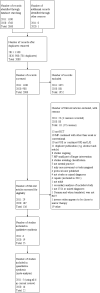

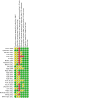

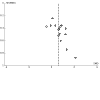
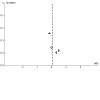
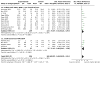
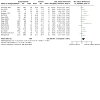

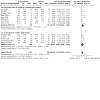

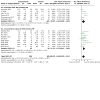

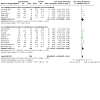

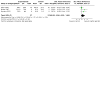
Update of
-
Mental practice for treating upper extremity deficits in individuals with hemiparesis after stroke.Cochrane Database Syst Rev. 2011 May 11;2011(5):CD005950. doi: 10.1002/14651858.CD005950.pub4. Cochrane Database Syst Rev. 2011. Update in: Cochrane Database Syst Rev. 2020 May 25;5:CD005950. doi: 10.1002/14651858.CD005950.pub5. PMID: 21563146 Free PMC article. Updated.
References
References to studies included in this review
Alves 2018 {published data only}
-
- Alves SS, Ocamoto GN, Camargo PS, Santos ATS, Terra AMSV. Effects of virtual reality and motor imagery techniques using Fugl Meyer Assessment scale in post-stroke patients. International Journal of Therapy and Rehabilitation 2018;25(11):587-96.
Ietswaart 2011 {published data only}
Kanwar 2011 {published data only}
-
- Kanwar S, Kashoo FZ. Comparing the immediate effect of auditory and visual mental imagery on reaching and grasping task among sub-acute stroke patients. Indian Journal of Physiotherapy and Occupational Therapy 2011;5(2):155-9.
Kim 2015 {published data only}
Kim 2017 {published data only}
-
- Kim H, Yoo EY, Jung MY, Kim J, Park JH, Kang DH. The effects of mental practice combined with modified constraint-induced therapy on corticospinal excitability, movement quality, function, and activities of daily living in persons with stroke. Disability and Rehabilitation 2018;40(20):2449-57. [DOI: 10.1080/09638288.2017.1337817] - DOI - PubMed
Li 2018 {published data only}
Müller 2007 {published data only}
-
- Müller K, Bütefisch CM, Seitz RJ, Hömberg V. Mental practice improves hand function after hemiparetic stroke. Restorative Neurology and Neuroscience 2007;25:501-11. - PubMed
Nayeem 2012 {published data only}
-
- Nayeem Z, Majumi M, Fuzail A. Effect of mental imagery on upper extremity function in stroke patients. Indian Journal of Physiotherapy and Occupational Therapy 2012;6(1):88-90.
Nilsen 2012 {published data only}
-
- Nilsen DM, Gillen G, di Russo T, Gordon AM. Effect of imagery perspective on occupational performance after stroke: a randomized controlled trial. American Journal of Occupational Therapy 2012;66(3):320-9. - PubMed
Oh 2016 {published data only}
-
- Oh HS, Kim EJ, Kim DY, Kim SJ. Effects of adjuvant mental practice on affected upper limb function following a stroke: results of Three-Dimensional Motion Analysis, Fugl-Meyer Assessment of the Upper Extremity and Motor Activity Logs. Annals of Rehabilitation Medicine 2016;40(3):401-11. [DOI: 10.5535/arm.2016.40.3.401] - DOI - PMC - PubMed
Page 2000 {published data only}
-
- Page SJ. Imagery improves upper extremity motor function in chronic stroke patients: a pilot study. Occupational Therapy Journal of Research 2000;20(3):200-15.
Page 2001a {published data only}
-
- Page SJ, Levine P, Sisto S, Johnston MV. A randomized efficacy and feasibility study of imagery in acute stroke. Clinical Rehabilitation 2001;15(3):233-40. - PubMed
Page 2005 {published data only}
-
- Page SJ, Levine P, Leonard AC. Effects of mental practice on affected limb use and function in chronic stroke. Archives of Physical Medicine and Rehabilitation 2005;86:399-402. - PubMed
Page 2007 {published data only}
-
- Page SJ, Levine P, Leonard A. Mental practice in chronic stroke. Results of a randomized, placebo-controlled trial. Stroke 2007;38:1293-7. - PubMed
Page 2009 {published data only}
-
- Page SJ, Levine P, Khoury JC. Modified constraint-induced therapy combined with mental practice: thinking through better motor outcomes. Stroke 2009;40(2):551-4. [DOI: ] - PubMed
Page 2011 {published data only}
Park 2015a {published data only}
Park 2015b {published data only}
Riccio 2010 {published data only}
-
- Riccio I, Iolascon G, Barillari MR, Gimigliano R, Gimigliano F. Mental practice is effective in upper limb recovery after stroke: a randomized single-blind cross-over study. European Journal of Physical and Rehabilitation Medicine 2010;46(1):19-25. - PubMed
Siqueira 2013 {published data only}
-
- Siqueira AO, Barbosa RFM. Constraint-induced movement therapy and mental practice to improve arm function in stroke patients. Revista Neurociencias 2013;21(2):193-201. [DOI: ]
Sun 2013 {published data only}
-
- Sun L, Yin D Zhu Y, Fan M, Zang L, Wu Y, et al. Cortical reorganization after motor imagery training in chronic stroke patients with severe motor impairment: a longitudinal fMRI study. Neuroradiology 2013;55(7):913-25. [DOI: ] - PubMed
Thara 2015 {published data only}
-
- Thara N, Kumar NS, Babu KV, Akalwadi A. Comparative study between task specific motor imagery with mental practice versus task specific mirror therapy on upper limb functions for subacute hemiplegia. International Journal of Physiotherapy 2015;2(5):824-33.
Timmermans 2013 {published data only}
-
- Timmermans AAA, Verbunt JA, Woerden R, Moennekens M, Pernot DH, Seelen HAM. Effect of mental practice on the improvement of function and daily activity performance of the upper extremity in patients with subacute stroke: a randomized clinical trial. Journal of the American Medical Directors Association 2013;14(3):204-12. [DOI: ] - PubMed
Wang 2019 {published data only}
-
- Wang H, XU G, Sun C, Zhu B, Jia J, Guo X, Sun L. The reorganization of resting-state brain networks associated with motor imagery training in chronic stroke patients. IEEE Transactions on Neural Systems and Rehabilitation Engineering 2019;DOI 10.1109/TNSRE.2019.2940980. - PubMed
Welfringer 2011 {published data only}
-
- Welfringer A, Leifert-Fiebach G, Babinsky R, Brandt T. Visuomotor imagery as a new tool in the rehabilitation of neglect: a randomised controlled study of feasibility and efficacy. Disability and Rehabilitation 2011;33(21-22):2033-43. [DOI: ] - PubMed
References to studies excluded from this review
BovendEerdt 2010 {published data only}
-
- Bovend'Eerdt TJ, Dawes H, Sackley C, Izadi H, Wade DT. An integrated motor imagery program to improve functional task performance in neurorehabilitation: a single-blind randomized controlled trial. Archives of Physical Medicine and Rehabilitation 2010;91(6):939-46. - PubMed
Hemmen 2007 {published data only}
-
- Hemmen B, Seelen HAM. Effects of movement imagery and electro-myography-triggered feedback on arm-hand function in stroke patients in the subacute phase. Clinical Rehabilitation 2007;21:587-94. - PubMed
Liu 2004 {published data only}
-
- Liu KP, Chan CC, Lee TM, Hui-Chan CW. Mental imagery for promoting relearning for people after stroke: a randomized controlled trial. Archives of Physical Medicine and Rehabilitation 2004;85(9):1403-8. - PubMed
Miltner 1999 {published data only}
-
- Miltner R, Simon U, Netz J, Hömberg V. Motor imagery in the therapy of patients with central motor deficit [Bewegungsvorstellung in der Therapie von Patienten mit Hirninfarkt]. Neurologie und Rehabilitation 1999;5(2):66-72.
References to studies awaiting assessment
Fu 2010 {published data only}
-
- Fu Q, Chen W, Yu J. The effects of motor imagery therapy on the upper limb motor function in hemiplegic stroke patients. Chinese Journal of Rehabilitation Medicine 2010;25(1):53-5.
Hu 2010 {published data only}
-
- Hu YX, Wang Q, Meng PP, Zuo MZ. Mental practice and upper extremity function after stroke. Zhonghua Wuli yu Kangfu Zazhi 2010;32(4):273-6.
Liu 2015 {published data only}
-
- Liu SF, Gao CL, Wang WJ, Yu CS, Wang XP, Wu JL. Effects of motor imagery combined with functional electrical stimulation on upper limb motor function of patients with acute ischemic stroke. Chinese Journal of Contemporary Neurology and Neurosurgery 2015;15(3):209-13. [DOI: ]
Liu 2016 {published data only}
-
- Liu W, Xu W, Wu W, Zhou H, Li Q. Effects of motor imagery and electromyographic biofeedback therapy on upper limp functions in patients with stroke. Chinese Journal of Cerebrovascular Diseases 2016;13(4):174-7. [DOI: ]
Ran 2013 {published data only}
-
- Ran MS, Ye JJ, Ma DB. Effects and changes of brain functional MRI of motor imagery therapy on acute cerebral infarction patients with upper limb paralysis. Journal of Clinical Neurology 2013;26(2):102-4.
Tang 2014 {published data only}
-
- Tang C, Ding Z, Li C, Chen C, Ding L, Zhang X, et al. Effects of motor imagery combined with task-oriented training on the recovery of upper extremity function after stroke. Chinese Journal of Physical Medicine and Rehabilitation 2014;36(11):832-7.
References to ongoing studies
ChiCTR‐IOR‐16008137 {published data only}
-
- ChiCTR-IOR-16008137. Graded motor imagery based on mirror neuron on rehabilitative training for stroke patients: a BOLD-fMRI study. http://www.chictr.org.cn/com/25/showprojen.aspx?proj=13608 (first received 22 March 2016).
CTRI/2016/05/006930 {published data only}
-
- CTRI/2016/05/006930. Mental imagery combined with physical practice to enhance hand recovery in stroke patients - a randomized controlled trial. http://www.ctri.nic.in/Clinicaltrials/pdf_generate.php?trialid=11967&... (first received 13 May 2016).
CTRI/2019/01/016966 {published data only}
-
- CTRI/2019/01/016966. Effectiveness of Graded Motor Imagery (GMI) on upper limb motor function, visuospatial neglect, depression,body image and quality of life of patients with subacute stroke residing in selected community health setting of Calicut District, Kerala. http://ctri.nic.in/Clinicaltrials/pmaindet2.php?trialid=29578 (first received 8 January 2019).
KCT0002574 {published data only}
-
- KCT0002574. Effects of adjuvant mental practice using inverse video of the unaffected upper limb in subacute stroke: a randomized controlled trial. https://cris.nih.go.kr/cris/search/search_result_st01_en.jsp?seq=9365&am... (first received 22 September 2017). - PubMed
NCT00379392 {published data only}
-
- NCT00379392. Mental imagery to reduce motor deficits in stroke. https://clinicaltrials.gov/ct2/show/NCT00379392 (first received 21 September 2006).
NCT01651533 {published data only}
-
- NCT01651533. Mental practice in chronic, stroke induced hemiparesis. https://clinicaltrials.gov/ct2/show/NCT01651533 (first received 27 July 2012).
NCT03251209 {published data only}
-
- NCT03251209. Mental practice in post-stroke subjects. https://clinicaltrials.gov/ct2/show/NCT03251209 (first received 16 August 2017).
SLCTR/2017/031 {published data only}
-
- SLCTR/2017/031. Effectiveness of first-person and third-person motor imagery in relearning daily hand tasks for people with chronic stroke: a randomised controlled trial. https://slctr.lk/trials/slctr-2017-031 (first received 22 September 2017).
Additional references
Andrews 2003
-
- Andrews AW, Bohannon RW. Short-term recovery of limb muscle strength after acute stroke. Archives of Physical Medicine and Rehabilitation 2003;84:125-30. - PubMed
Batson 2004
-
- Batson G. Motor imagery for stroke rehabilitation - current research as a guide to clinical practice. Alternative and Complimentary Therapies 2004;10:84-9.
Bernhardt 2008
-
- Bernhardt J, Chitravas N, Meslo IL, Thrift AG, Indredavik B. Not all stroke units are the same: a comparison of physical activity patterns in Melbourne, Australia, and Trondhein, Norway. Stroke 2008;39:2059-65. - PubMed
Braun 2006
-
- Braun SM, Beurskens AJ, Borm PJ, Schack T, Wade DT. The effects of mental practice in stroke rehabilitation: a systematic review. Archives of Physical Medicine and Rehabilitation 2006;87:842-52. - PubMed
Canning 2004
-
- Canning CG, Ada L, Adams R, O'Dwyer NJ. Loss of strength contributes more to physical disability after stroke than loss of dexterity. Clinical Rehabilitation 2004;18:300-8. - PubMed
Carey 1995
-
- Carey LM. Somatosensory loss after stroke. Critical Reviews in Physical Rehabilitation Medicine 1995;7:51-91.
Chae 2002
-
- Chae J, Yang G, Park BY, Labatia I. Muscle weakness and cocontraction in upper limb hemiparesis: relationship to motor impairment and physical disability. Neurorehabilitation and Neural Repair 2002;16:241-8. - PubMed
Chen Sea 1993
-
- Chen Sea M-J, Henderson A, Cermak SA. Patterns of visual spatial inattention and their functional significance in stroke patients. Archives of Physical Medicine and Rehabilitation 1993;74:355-60. - PubMed
Corbetta 2015
Di Rienzo 2014
-
- Di Rienzo F, Collet C, Hoyek N, Guillot A. Impact of neurologic deficits on motor imagery: a systematic review of clinical evaluations. Neuropsychology Review 2014;24:116-47. - PubMed
Driskell 1994
-
- Driskell JE, Cooper C, Moran A. Does mental practice enhance performance? Journal of Applied Psychology 1994;79:481-92.
Duncan 1999
-
- Duncan PW, Wallace D, Lai SM, Johnson D, Embretson S, Laster LJ. The Stroke Impact Scale version 2.0: evaluation of reliability, validity, and sensitivity to change. Stroke 1999;30:2131-40. - PubMed
Felz 1983
-
- Felz DH, Landers DM. The effects of mental practice on motor skill learning and performance: a meta analysis. Journal of Sports Psychology 1983;5:25-57.
French 2016
Fugl‐Meyer 1980
-
- Fugl-Meyer AR. Post-stroke hemiplegia assessment of physical properties. Scandanavian Journal of Rehabilitation Medicine 1980;7:85-93. - PubMed
Gorelick 2019
-
- Gorelick PB. The global burden of stroke: persistent and disabling. Lancet Neurology 2019;18:417-8. - PubMed
Gowland 1993
-
- Gowland C, Stratford P, Ward M, Moreland J, Torresin W, Van Hullenaar S, et al. Measuring physical impairment and disability with the Chedoke-McMaster Stroke Assessment. Stroke 1993;24:58-63. - PubMed
GRADEpro GDT
-
- GRADEpro GDT: GRADEpro Guideline Development Tool [Software]. McMaster University, 2015 (developed by Evidence Prime, Inc.). Available from gradepro.org.
Heart and Stroke 2018
-
- Heart and Stroke Foundation of Canada. What Is Stroke? https://www.heartandstroke.ca/stroke/what-is-stroke 2018.
Higgins 2011
-
- Higgins JP, Green S (editors). Cochrane Handbook for Systematic Reviews of Interventions, Version 5.1.0 (updated March 2011). Cochrane, 2011. Available from www.cochrane-handbook.org.
Higgins 2019
-
- Higgins JP, Thomas J, Chandler J, Cumpston M, Li T, Page MJ, Welch VA (editors). Cochrane Handbook for Systematic Reviews of Interventions version 6.0 (updated July 2019). Cochrane, 2019. Available from www.training.cochrane.org/handbook. - PMC - PubMed
Hsieh 1998
-
- Hsieh CL, Hsueh IP, Chiang FM, Lin PH. Inter-rater reliability and validity of the Action Research Arm Test in stroke patients. Age and Ageing 1998;27:107-14. - PubMed
Jackson 2001
-
- Jackson PL, Lafleur MF, Malouin F, Richards C, Doyon J. Potential role of mental practice using motor imagery in neurologic rehabilitation. Archives of Physical Medicine and Rehabilitation 2001;82:1133-41. - PubMed
Jebsen 1969
-
- Jebsen RH, Taylor N, Trieschmann RB, Howard LA. An objective and standardized test of hand function. Archives of Physical Medicine and Rehabilitation 1969;50:311. - PubMed
Katz 1999
-
- Katz N, Hartman-Maeir A, Ring H, Soroker N. Functional disability and rehabilitation outcome in right hemisphere damaged patients with and without unilateral spatial neglect. Archives of Physical Medicine and Rehabilitation 1999;80:379-84. - PubMed
Keith 1987
-
- Keith RA, Granger CV, Hamilton BB, Sherwin FS. The Functional Independence Measure: a new tool for rehabilitation. In: Eisenberg MG, Grzesiak RC, editors(s). Advances in Clinical Rehabilitation. New York: Springer, 1987:6-18. - PubMed
Kho 2014
-
- Kho AY, Liu KPY, Chung RCK. Meta-analysis on the effect of mental imagery on motor recovery of the hemiplegic upper extremity function. Australian Journal of Occupational Therapy 2014;61:38-48. - PubMed
Machado 2019
-
- Machado TC, Carregosa AA, Santos MS, da Silva Ribeiro NM, Melo A. Efficacy of motor imagery additional to motor-based therapy in the recovery of motor function of the upper limb in post -stroke individuals: a systematic review. Topics in Stroke Rehabilitation 2019;26(7):548-53. [DOI: ] - PubMed
Mahoney 1965
-
- Mahoney FI, Barthel DW. Functional evaluation: the Barthel Index. Maryland State Medical Journal 1965;14:61-5. - PubMed
Malouin 2007
-
- Malouin F, Richards C, Jackson PL, Lafleur MF, Durand A, Doyon J. The kinesthetic and visual imagery questionnaire (KVIQ) for assessing motor imagery in persons with physical disabilities: a reliability and construct validity study. Journal of Neurologic Physical Therapy 2007;31:20-9. - PubMed
Malouin 2013
Mathiowetz 1985
-
- Mathiowetz V, Volland G, Kashman N, Weber K. Adult norms for the box and block test of manual dexterity. American Journal of Occupational Therapy 1985;39:386-91. - PubMed
Mayo 1999
-
- Mayo N, Wood-Dauphinee S, Ahmed S, Gordon C, Higgins J, McEwen S, et al. Disablement following stroke. Disability and Rehabilitation 1999;21(5/6):258-68. - PubMed
Mehrholz 2018
-
- Mehrholz J, Pohl M, Platz T, Kugler J, Elsner B. Electromechanical and robot-assisted arm training for improving activities of daily living, arm function, and arm muscle strength after stroke. Cochrane Database of Systematic Reviews 2018, Issue 9. [DOI: 10.1002/14651858.CD006876.pub5] - DOI - PMC - PubMed
Mercier 2004
-
- Mercier C, Bourbonnais D. Relative shoulder flexor and handgrip strength is related to upper limb function after stroke. Clinical Rehabilitation 2004;18:215-21. - PubMed
Nakayama 1994
-
- Nakayama H, Jorgensen HS, Raaschou HO, Olsen TS. Recovery of upper extremity function in stroke patients: the Copenhagen Stroke Study. Archives of Physical Medicine and Rehabilitation 1994;75:394-8. - PubMed
Nilsen 2010
-
- Nilsen DM, Gillen G, Gordon AM. Use of mental practice to improve upper-limb recovery after stroke:a systematic review. American Journal of Occupational Therapy 2010;64(5):695-708. - PubMed
Page 2001b
-
- Page SJ. Mental practice: a promising restorative technique in stroke rehabilitation. Topics in Stroke Rehabilitation 2001;8:54-63. - PubMed
Page 2016
Park 2018
-
- Park SW, Kim JH, Yang YJ. Mental practice for upper limb rehabilitation after stroke: a systematic review and meta-analysis. International Journal of Rehabilitation Research 2018;41:197-203. - PubMed
Parker 1986
-
- Parker VM, Wade DT, Langton Hewer R. Loss of arm function after stroke: measurement, frequency, and recovery. International Journal of Rehabilitation Medicine 1986;8:69-73. - PubMed
Pollock 2014
RevMan 2014 [Computer program]
-
- Nordic Cochrane Centre, The Cochrane Collaboration Review Manager (RevMan). Version 5.3. Copenhagen: Nordic Cochrane Centre, The Cochrane Collaboration, 2014.
Rose 2004
-
- Rose DK, Winstein CJ. Bimanual training after stroke: are two hands better than one? Topics in Stroke Rehabilitation 2004;11:20-30. - PubMed
Schünemann 2013
-
- Schünemann H, Brożek J, Guyatt G, Oxman A. GRADE Handbook. https://gdt.gradepro.org/app/handbook/handbook.html#h.ygojbnr1bi5y 2013.
Song 2019
-
- Song K, Wang L, Wu W. Mental practice for upper limb motor restoration after stroke: an updated meta-analysis of randomized controlled trials. Topics in Stroke Rehabilitation 2019;26(2):87-93. - PubMed
Struijs 2006
-
- Struijs JN, Genugten ML, Evers SM. Future costs of stroke in the Netherlands: the impact of stroke services. International Journal of Technology Assessment in Health Care 2006;22:518-24. - PubMed
Sunderland 1989
Thieme 2018
Uswatte 2006
-
- Uswatte G, Taub E, Morris D, Light K, Thompson PA. The Motor Activity Log-28: assessing daily use of the hemiparetic arm after stroke. Neurology 2006;67(7):1189-94. - PubMed
Wolf 2001
-
- Wolf SL, Catlin PA, Ellis M, Link Archer A, Morgan B, Piacentino A. Assessing Wolf Motor Function Test as outcome measure for research in patients after stroke. Stroke 2001;32:1635-9. - PubMed
Woodford 2007
World Health Organization 2001
-
- World Health Organization. International Classification of Functioning, Disability and Health. Geneva: World Health Organization, 2001.
References to other published versions of this review
Publication types
MeSH terms
Grants and funding
LinkOut - more resources
Full Text Sources
Medical

